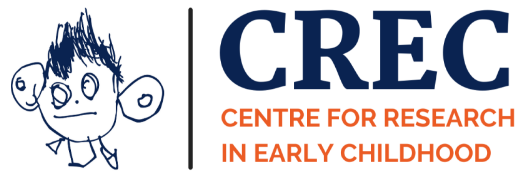Considering the value of a ‘hybrid pedagogy’ for the EYFS
Chris Pascal and Tony Bertram in Dialogue with Julie Fisher
In a recent fascinating email dialogue with Julie Fisher, she asked us to clarify what we meant by the term ‘Hybrid Pedagogy’, which we refer to in our recent literature review ‘Getting it Right in the Early Years Foundation Stage: a Review of the Evidence’ .
Julie was interested to know why, and how, we used this term rather than the more commonly used term ‘Balanced Pedagogy’.
We've used the term 'Hybrid Pedagogy' in other recent literature reviews we have undertaken on the EYFS for the DfE ( Review of the Evidence: EYFS Early learning Goals, Teaching Content and Pedagogy in Reception Year) and the Welsh Government (Integrated Early Years Systems: A Review of International Evidence ), as well as in work we have undertaken looking at pedagogic approaches within Europe more widely (for example, the Formosinho's work on participatory pedagogies detailed in Assessment and Evaluation for Transformation in Early Childhood Assessment ).
These reviews indicated, for us, a tension between child-led, play-based pedagogic approaches and adult-led or directed, formal pedagogic approaches and evidence which suggested that a ‘balanced approach’ between these two alternative pedagogies might be more effective in the EYFS. However, our own work had suggested to us that rather than ‘balance’, a ‘fusion’ in pedagogic approaches was more effective.
For us, the term 'balanced' seems to convey that the practitioner offers the child experiences of both adult-led and child-initiated/play-based activity separately, albeit fluidly, giving children experience of both approaches but as distinct entities.
In what we are calling a ‘Hybrid Pedagogy’, the approach is more blended so that the two approaches are offered more seamlessly and often within one activity or teaching episode, with sometimes the adult leading the learning and sometimes the child, so they are not experienced by either child or adult as two distinct and separate ways of teaching and learning.
Julie’s very interesting response to our definition was also insightful; she pointed out that this was not a semantic issue but a pedagogic one.
She agreed that in the best of early years practice — exemplified by the nursery schools — there is fluidity between the two types of learning situations and that the approach is, in our words, more 'blended'. However, she argued that with increased regulation for (particularly) Reception classes, and certainly for KS1 classes, the two learning scenarios must be thought of separately.
Julie felt that this doesn't mean that there cannot be fluidity between them and that many of the adult roles do not overlap, but with prescription comes what one headteacher called 'coercion'. She argued that adult-led has, in many cases, become adult-insisted and in these situations, the role of the adult is quite different than the traditional adult-led (inspired/initiated) role.
She pointed out that when adults 'insist' then children have no choice but to comply and adults have an agenda usually imposed from outside, and they must comply. So if teachers are not clear about the difference in their role when they leave the phonics session (say) and move to the sand-pit, Julie believes they are going to try and lead, direct and interfere too much in children's play.
She, therefore, argues that for these older children (and in training for some nursery practitioners too) this distinction in pedagogic approaches can help them to understand the change in their role. In the adult-led (insisted) situation they are leading the learning and the children (hopefully) are following. When children are playing and exploring then THEY are leading the learning and the adult should be 'following'. So for Julie, the ideal is our fusion, but she believes that reality requires a clear distinction between the two approaches or teachers will continue to interfere with, dominate, and interrupt play.
This was a very interesting and provocative dialogue which we appreciated as it made us think more deeply and carefully about the terms we use and what they convey to those at the front line of pedagogic practice.
We would be interested to hear other perspectives on this much-contested issue and welcome your comments!
